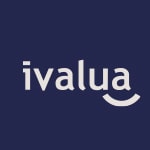It’s time to rethink Procurement’s approach to value measurement!
In the face of economic, supply chain, and labor challenges that arose during the last three years, procurement has had to rethink the way they demonstrate value.
To better understand current value measurement trends and cost savings practices in volatile market conditions, we recently published our findings from the 2023 Procurement Value Measurement Study, conducted in partnership with The Hackett Group.
In today’s business landscape, procurement has taken on a new role beyond simply finding cost savings. According to the study, procurement professionals are increasingly being tasked with creating value in innovative ways. This shift in focus underscores the importance of a more holistic approach to value-driven procurement that aligns with the priorities of the overall business.
While cost savings will always play a critical role, it is clear that successful procurement leaders must think outside the box and find new ways to deliver value to the organization. By embracing this approach, procurement can truly become a strategic partner to the business.
Savings Still at the Top of Procurement’s Scorecard
Year-over-year savings is still the most common performance value metric that procurement reports to senior leadership, followed closely by cost avoidance. The study’s findings also reveal the ways procurement is being encouraged to add more value above cost-saving strategies in response to evolving global business demands.
For instance, procurement has been tasked with responsible procurement practices and third-party risk management efforts. Each of these, and their many components, speaks to the growing trend of procurement value creation beyond savings.
Surprising Trends in Third-Party Risk Management and Supply Assurance
Procurement plays a critical role in third-party risk management, helping their organizations protect revenue, brand reputation, and the customer experience. The study found that procurement relies most heavily on three main indicators to demonstrate risk management success: composite supplier risk scores, overall supplier financial health, and supplier regulatory compliance.
What’s often missed however, is that this information needs to be up-to-date and accessible at every point in the Source-to-Pay process. Regrettably, this is not always the scenario when dealing with a mix of technologies and numerous supplier databases.
Interestingly enough, survey participants indicated that metrics like revenue or margin at risk were not often used to demonstrate successful third-party risk management to senior leadership.
The finding that supplier quality levels and on-time supplier delivery are the most commonly reported supply assurance metrics is not surprising considering how critical they are, and tracking on-time delivery indicates a prioritization of reliability and customer satisfaction.
Approaches to Capturing Value
The methodology an organization adopts for measuring savings plays a pivotal role in determining how various value elements are categorized.
Traditional procurement performance measurement, both in terms of focus and impact capture, are still prioritized by many organizations. Even the practice of treating projects with no baseline spend as cost avoidance rather than savings is still common.
The study also found that many procurement teams only count savings from price hedging in their savings reports, ignoring other valuable elements like demand management, quality cost reduction, lower tax expenses, and working capital benefits. Surprisingly, 79 percent of organizations do not recognize working capital benefits as a procurement contribution, even though managing cash flow is essential when interest rates are high.
Other areas of value that the study found procurement teams are not tracking as savings include revenue uplift (86 percent not tracking), currency hedging (86 percent), and supply risk management costs (75 percent).
However, it is important to note that teams are diligently tracking and monitoring cost avoidance savings associated with preventing price increases and avoiding higher costs during contractual periods when market prices are on the rise. Historically, procurement teams have faced criticism from finance departments for their efforts to discourage suppliers from raising prices, as finance does not necessarily perceive this as genuine savings or cost avoidance. It is worth mentioning that this dynamic seems to hold true both during active contracts and in the interim periods between contracts.
AI’s Impact on Procurement Value Creation
As if all of the macro change has not been enough, procurement is also faced with the current and potential future impact of AI. Not only will this force procurement professionals to augment their skills, it will raise questions about which tasks should be completed by humans and which should be offloaded to automation.
It is too early to say what the precise impact will be on each procurement process and subprocess, but AI, in particular generative AI, will impact procurement productivity and efficiency as well as the time it has to spend on more strategic objectives, impacting value contribution.
Confident procurement leaders and organizations will be eager to embrace the benefits of this new technology and proactive about communicating their expanded capabilities and capacity to the rest of the business.
Savings that Reach the Bottom Line
One of the significant challenges that procurement teams often face is establishing credibility with regard to savings reporting. According to the survey, it was found that 38 percent of the respondents mentioned that cost increases have no effect on savings, while only 27 percent consistently report net savings by deducting cost increases from their figures.
Furthermore, an additional 32 percent occasionally employ this practice, and it is noteworthy to mention that this practice has the potential to impact the trustworthiness of the savings figures reported by procurement teams.
Conclusion
The 2023 Procurement Value Measurement Study reveals that procurement is increasingly being tasked with delivering and reporting on value beyond savings.
In light of recent supply chain disruptions and economic volatility, procurement has had to redefine their approach to demonstrating and tracking value, highlighting a growing emphasis on broader value elements (like DEI and risk management) and a shift towards more holistic value measurement better aligned with the priorities of the business.
Download the New Hackett Group 2023 Procurement Value Measurement Study HERE




